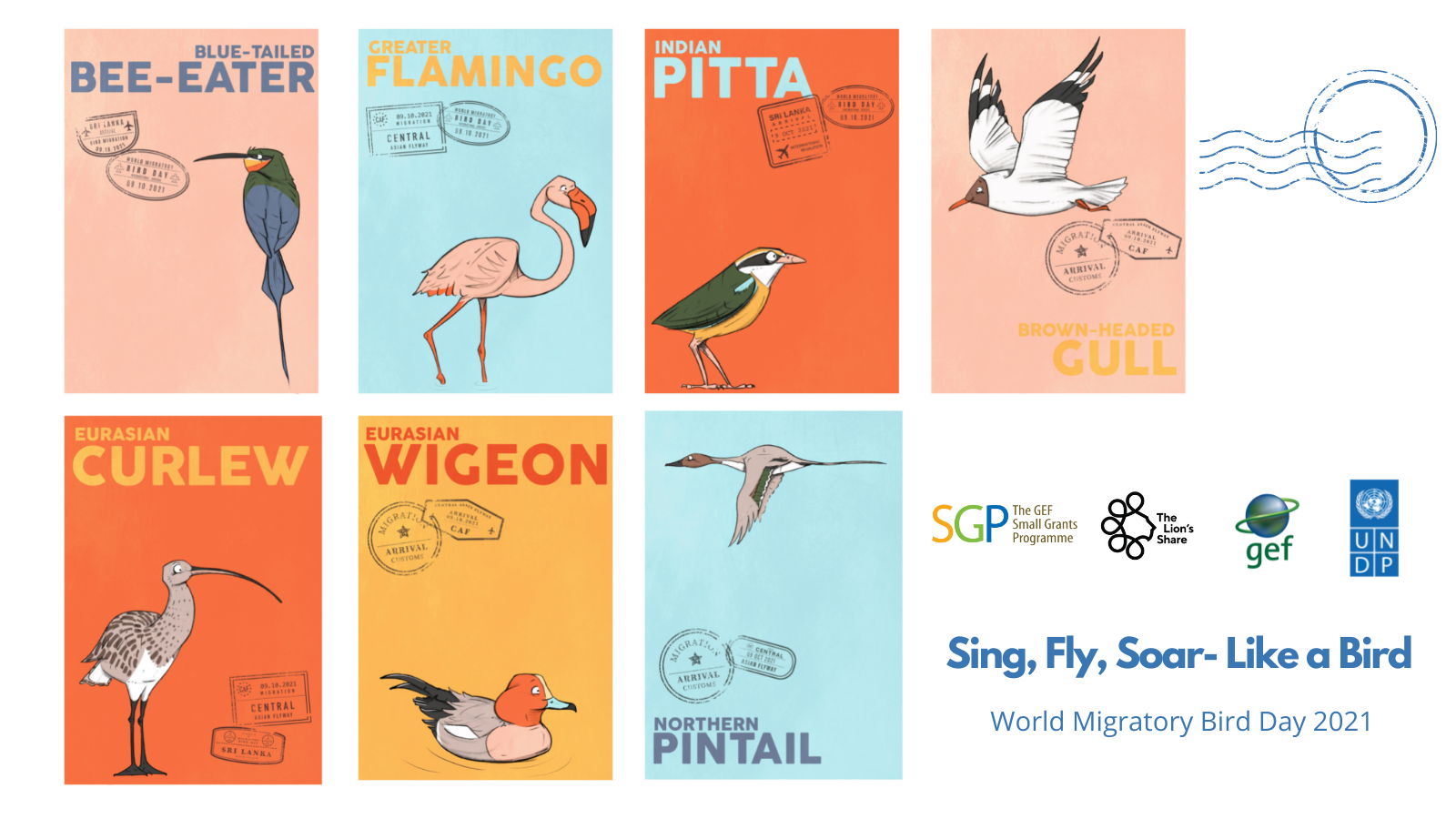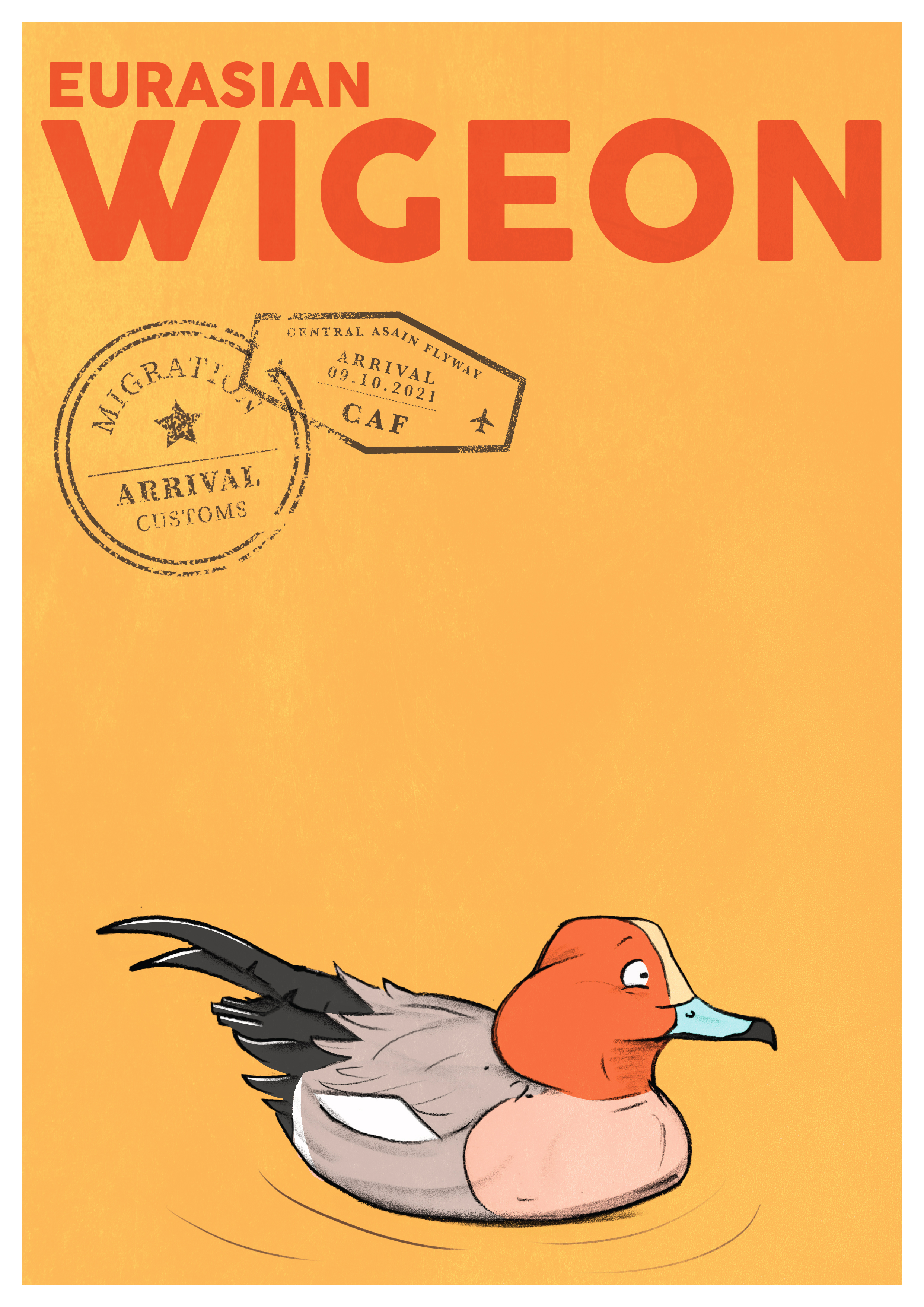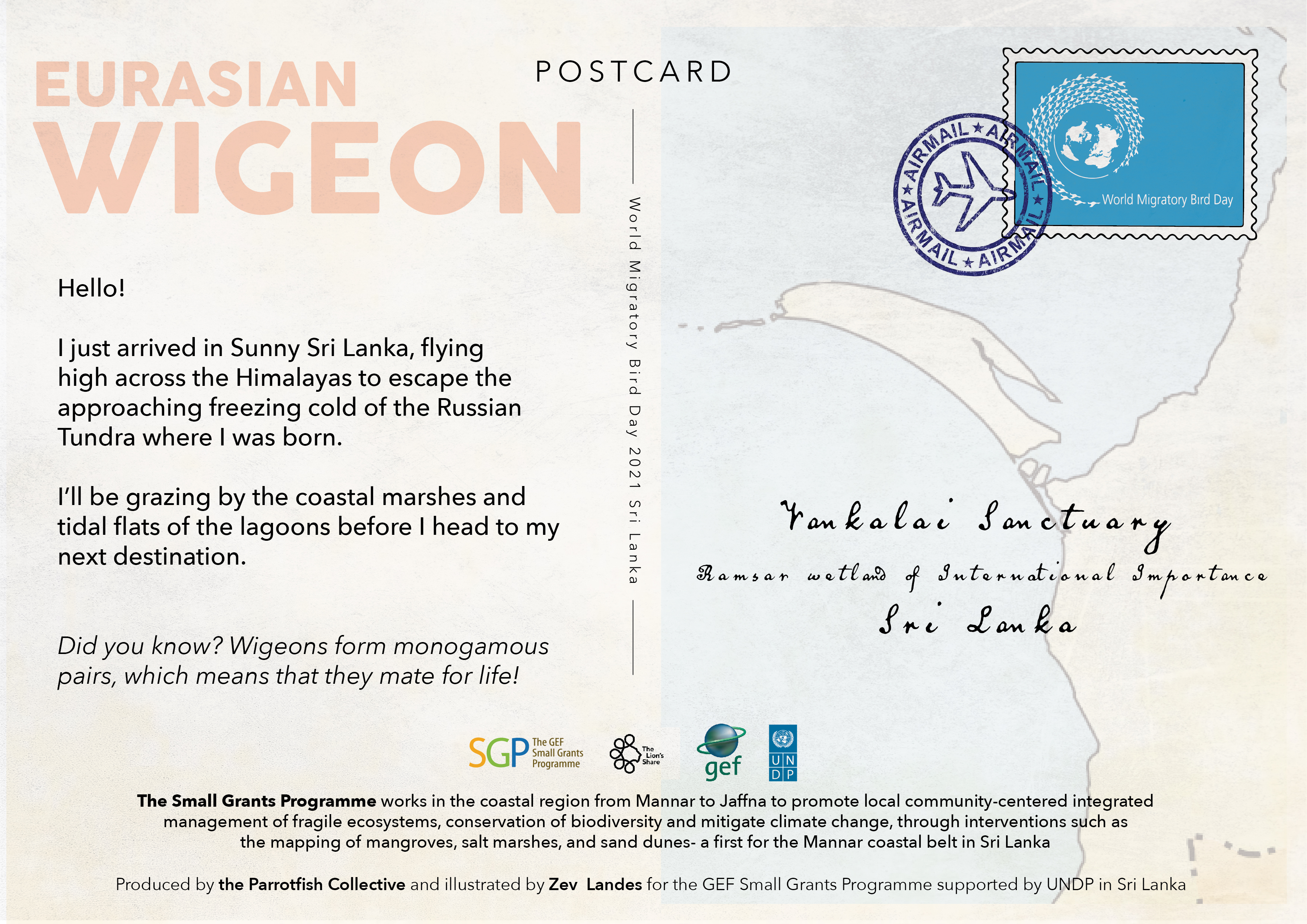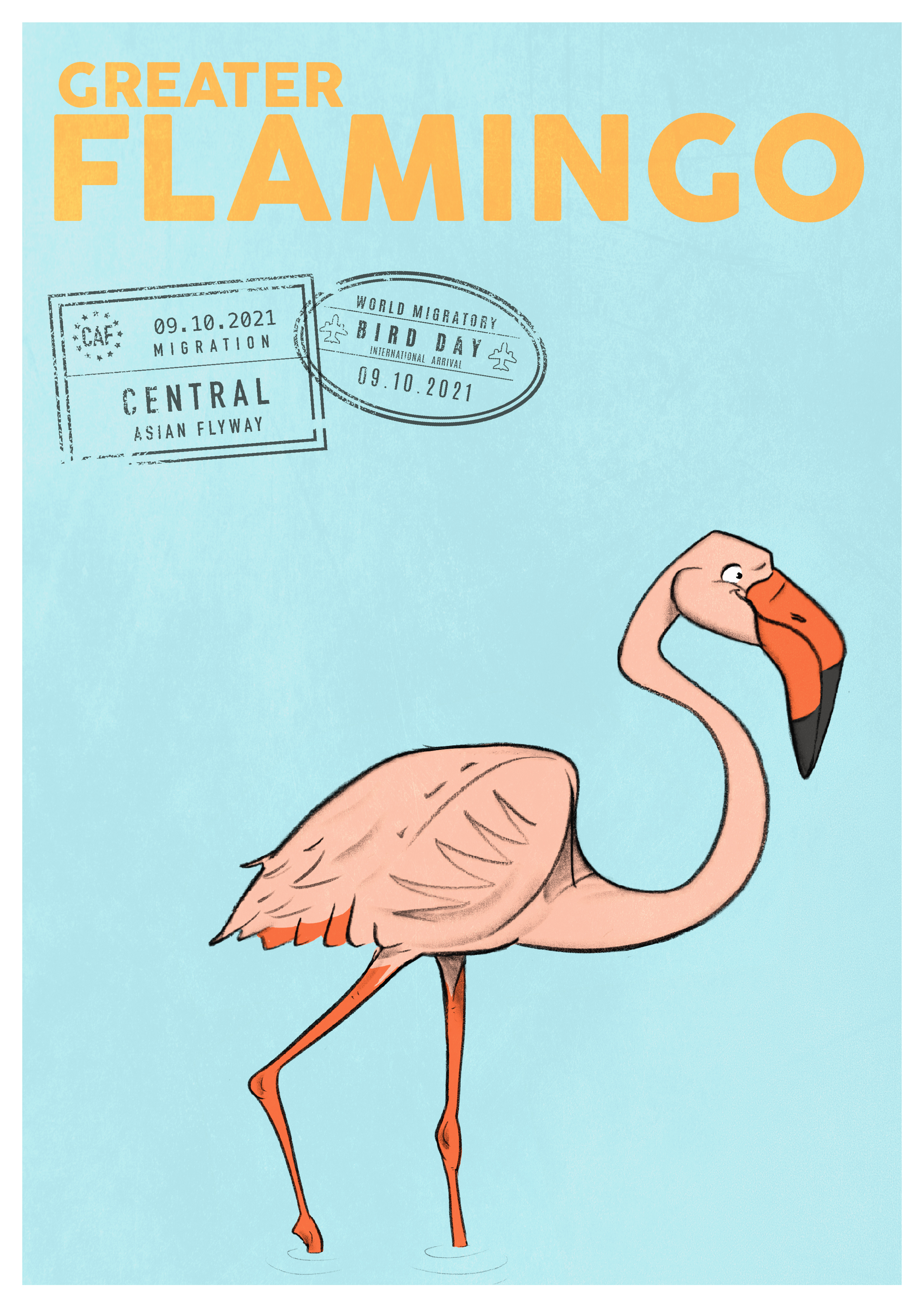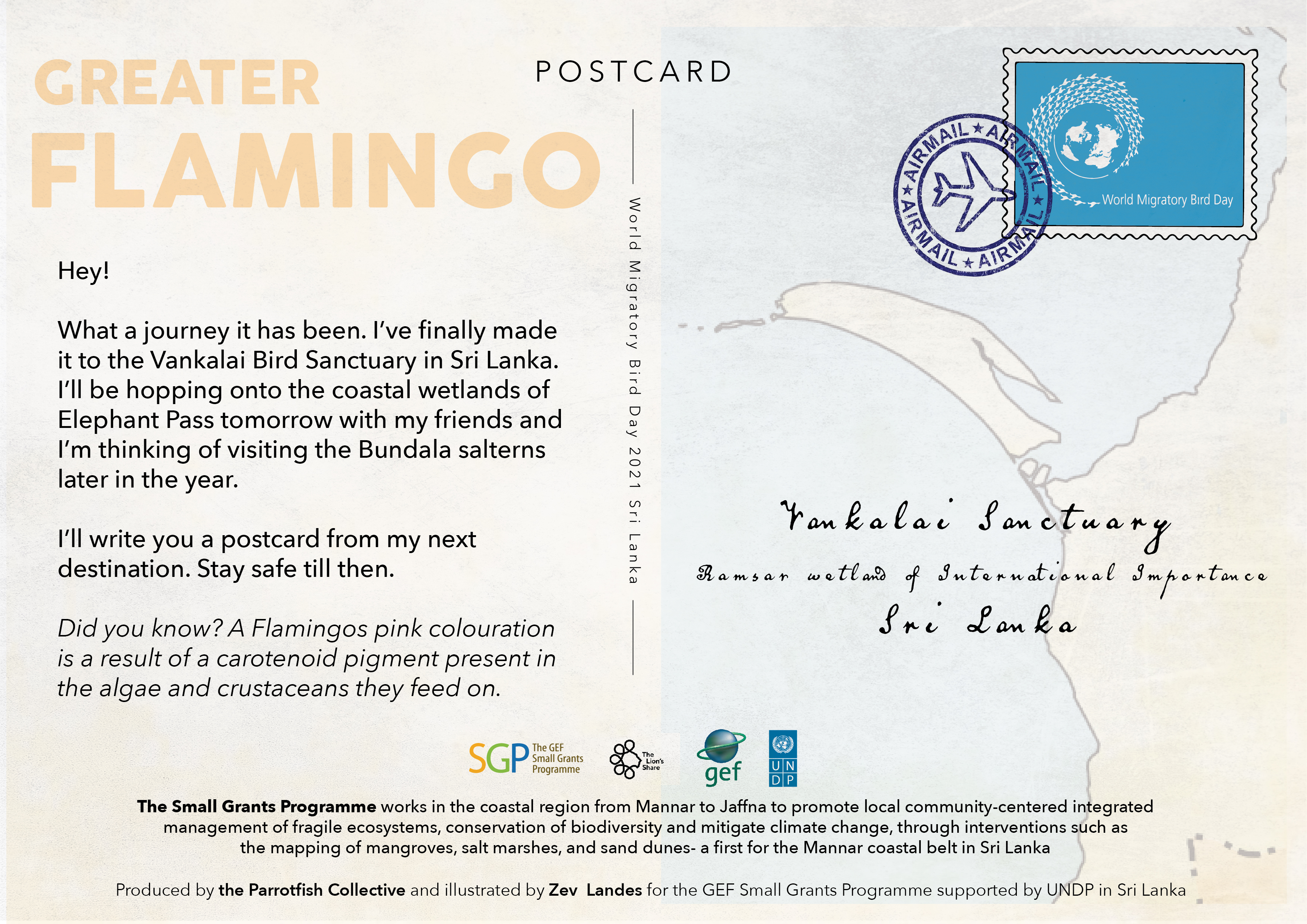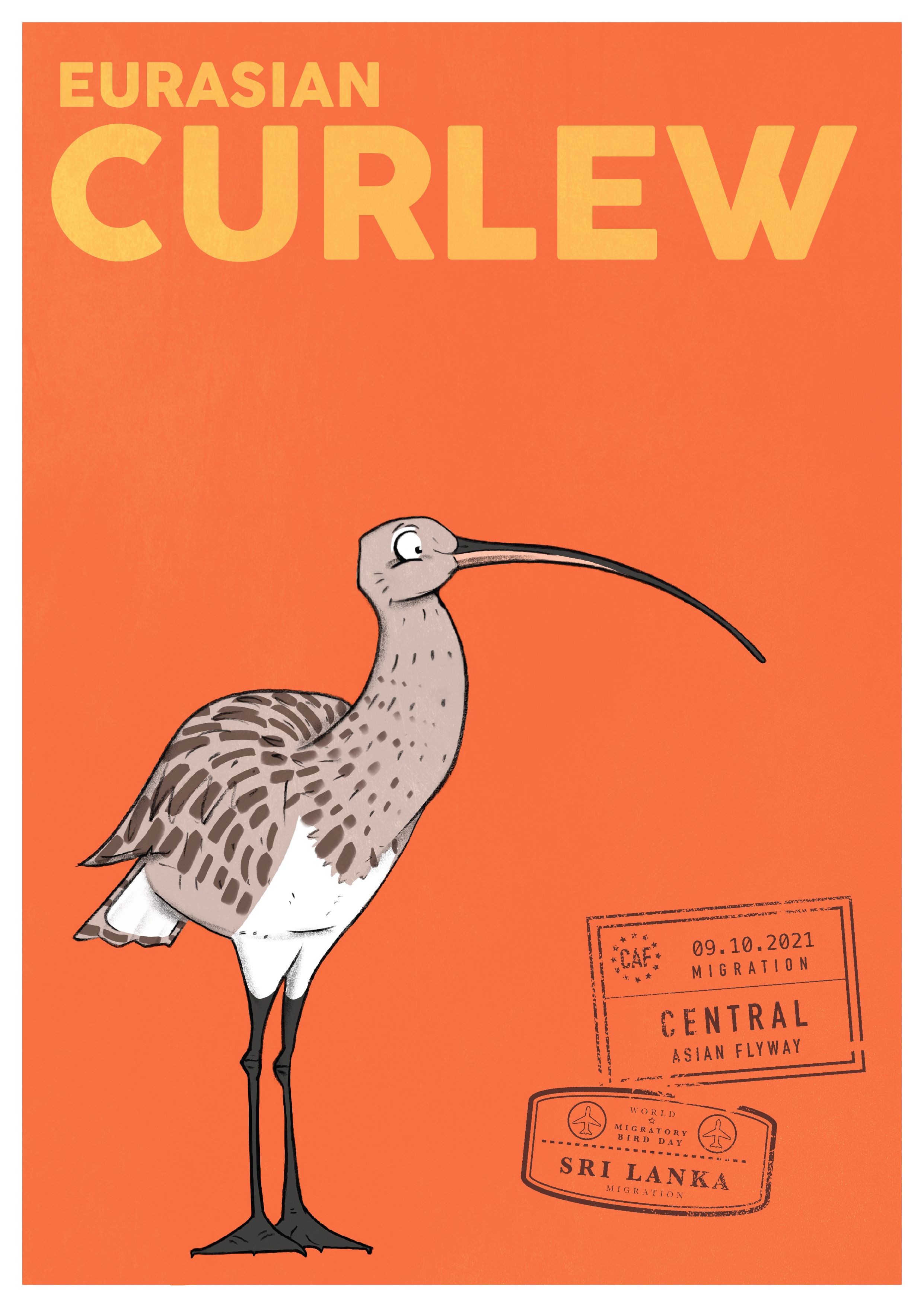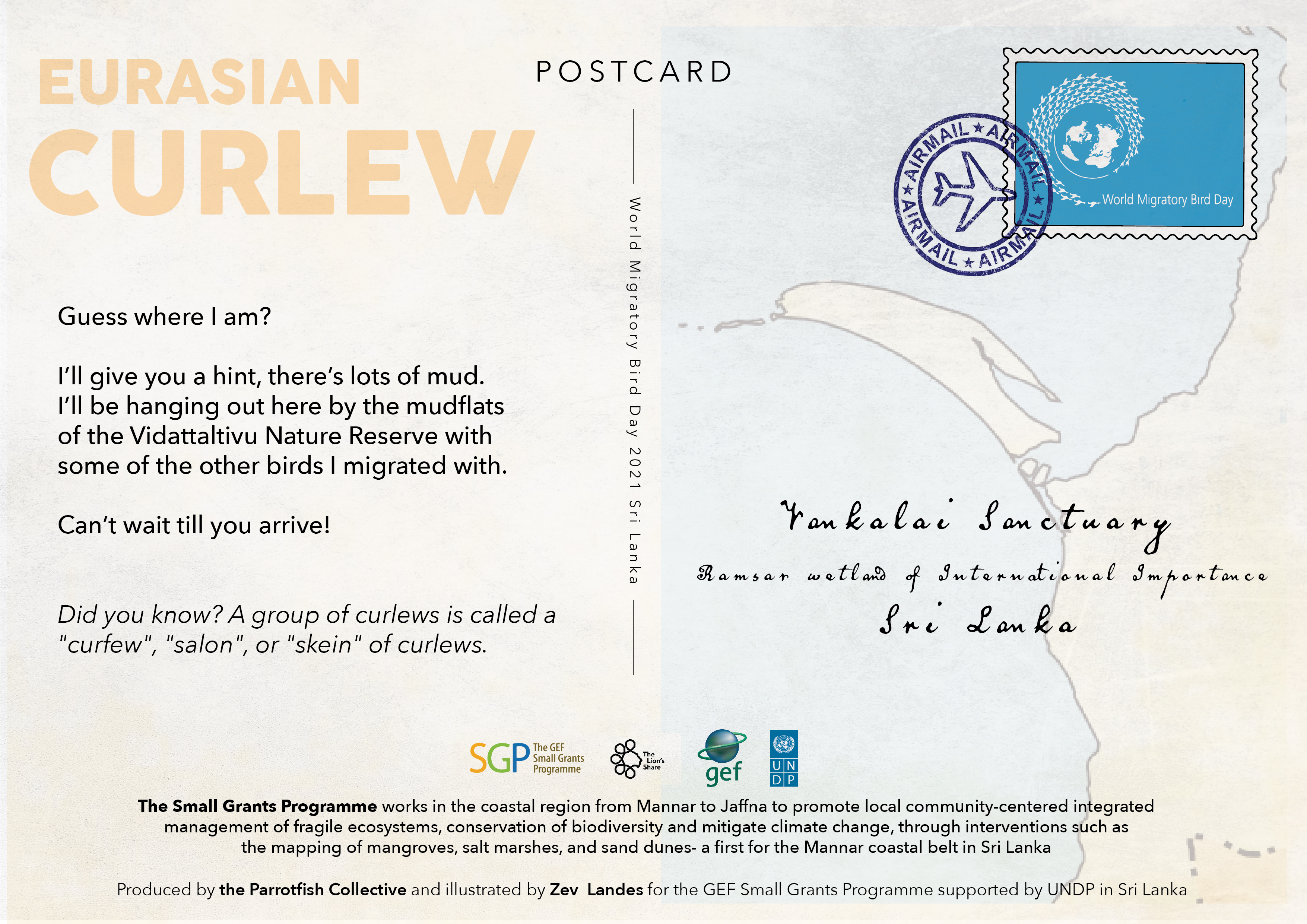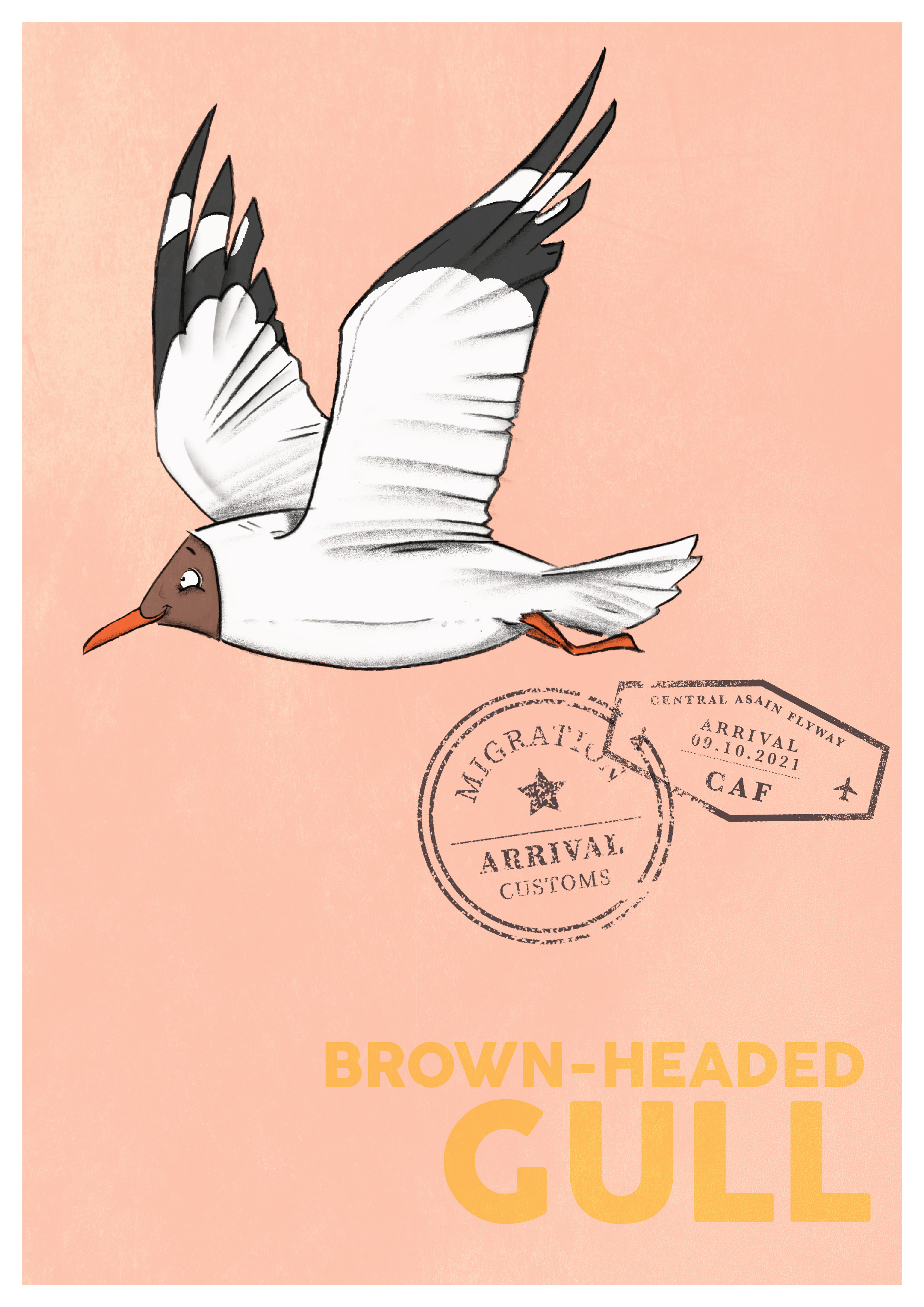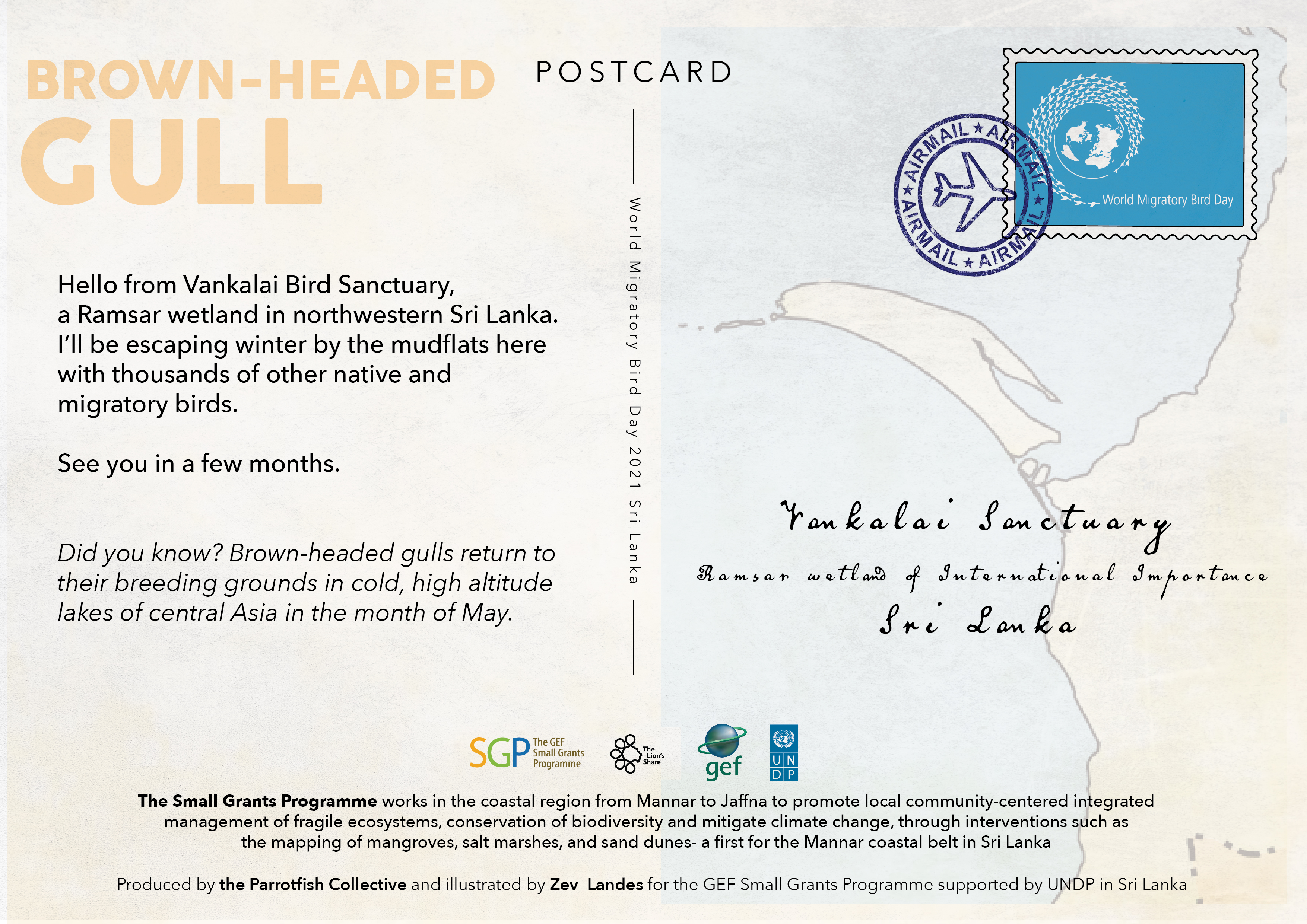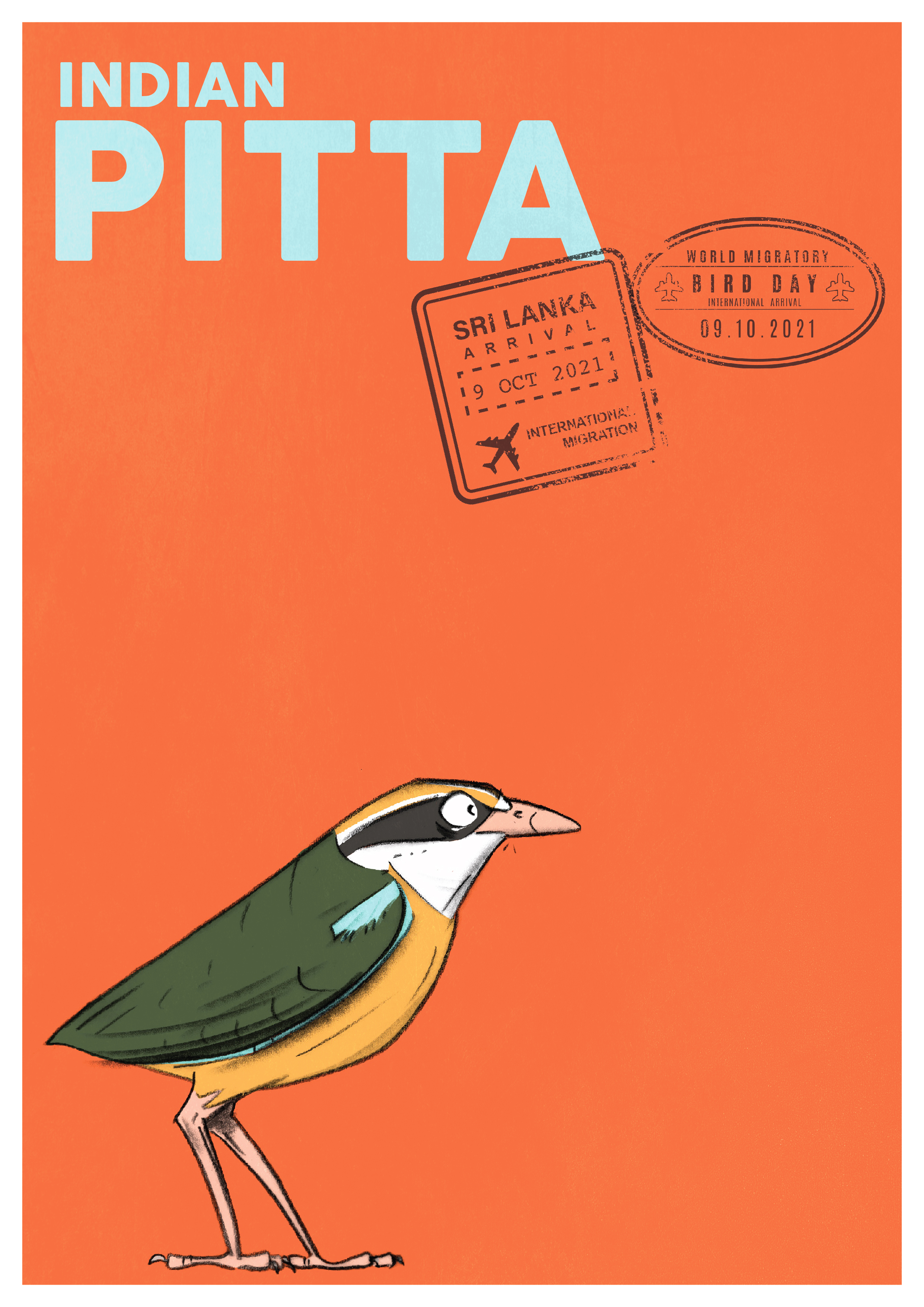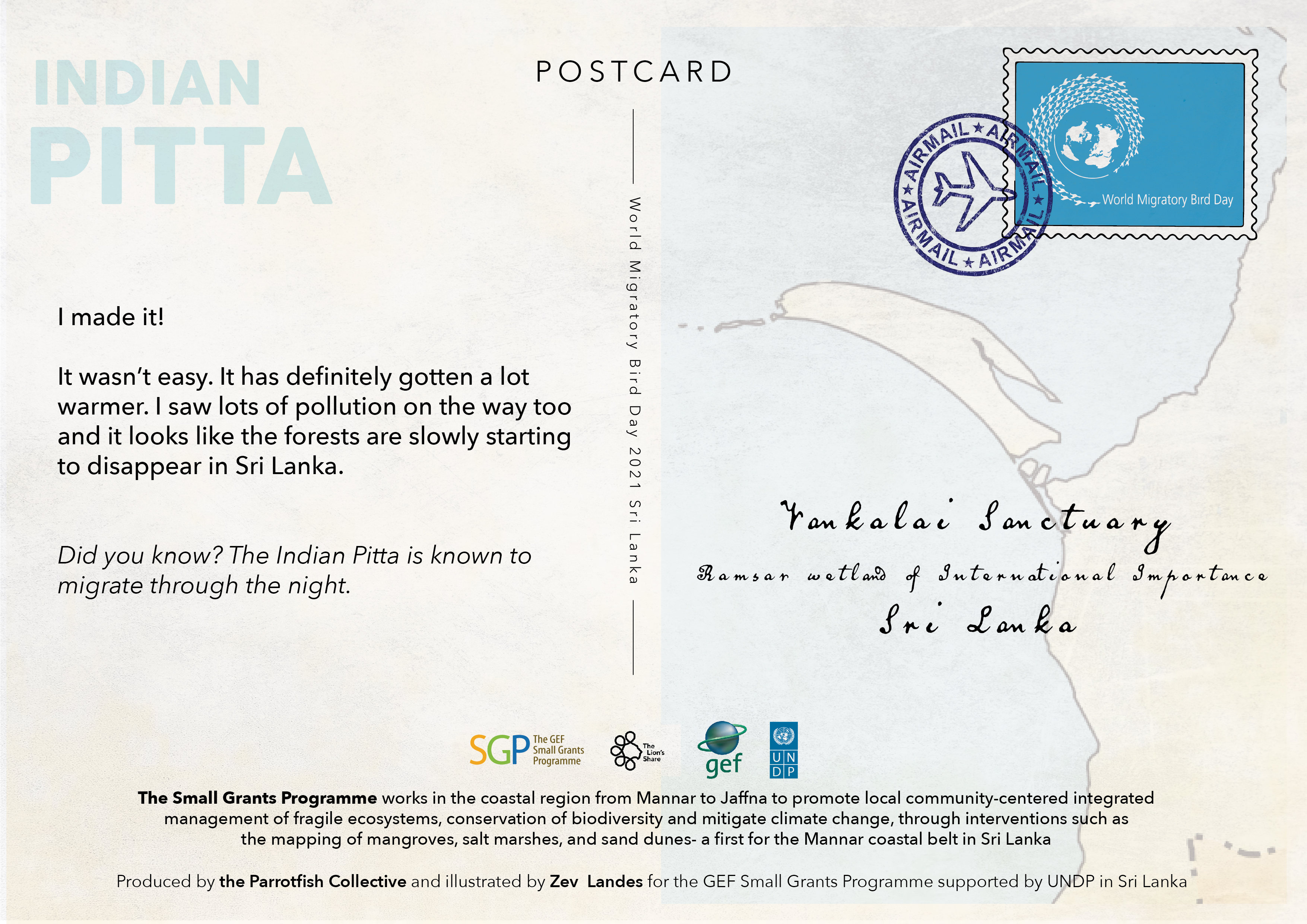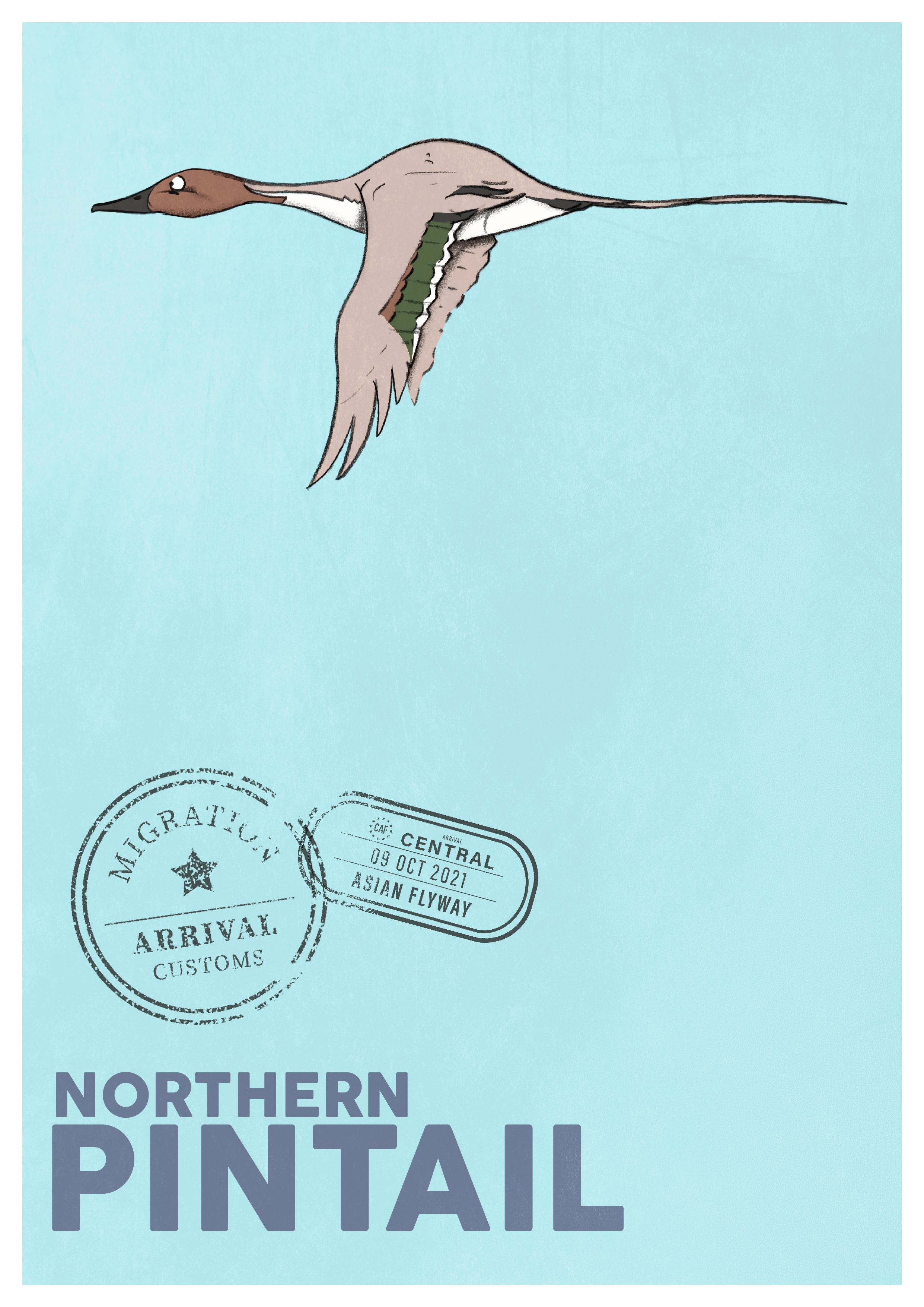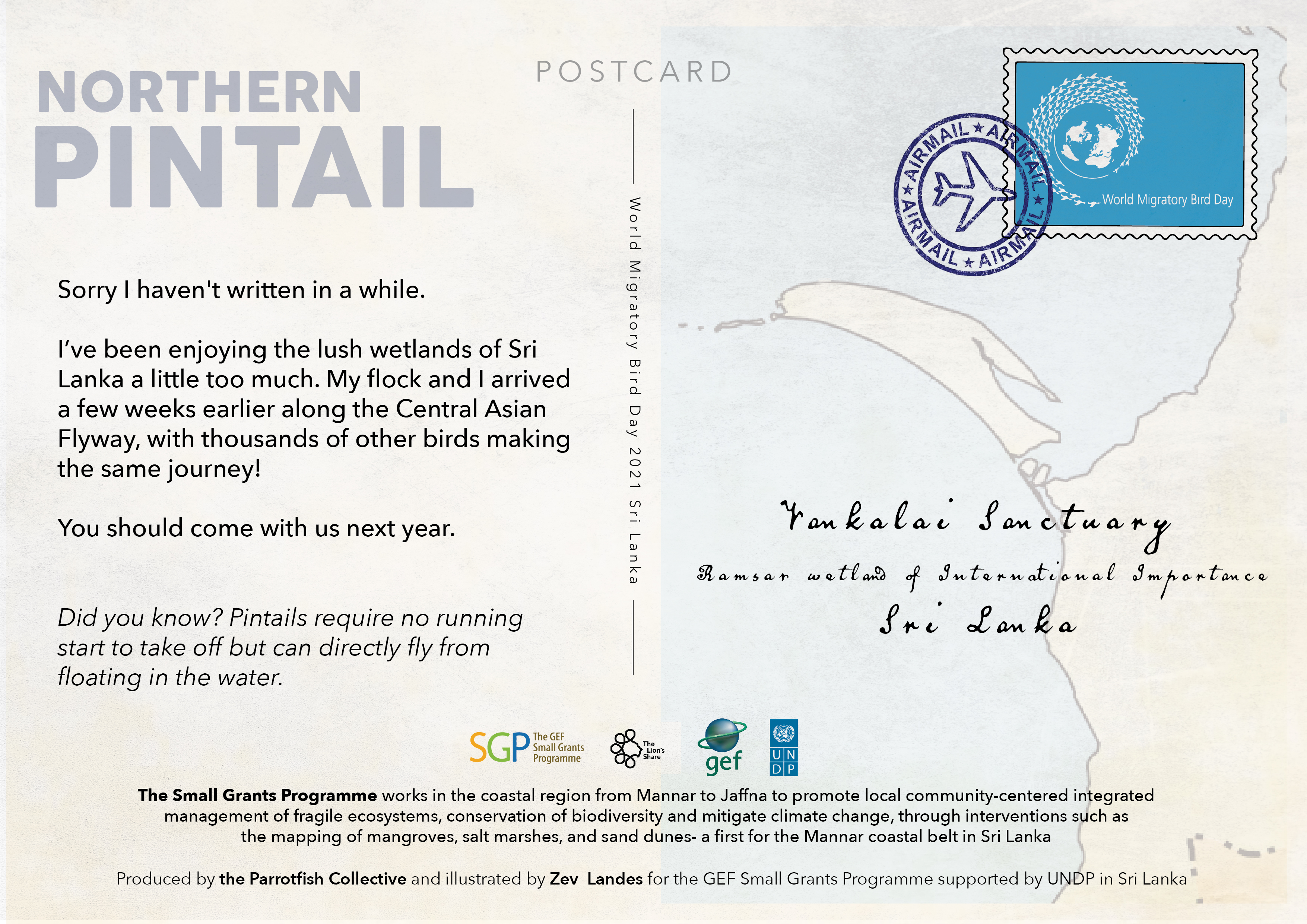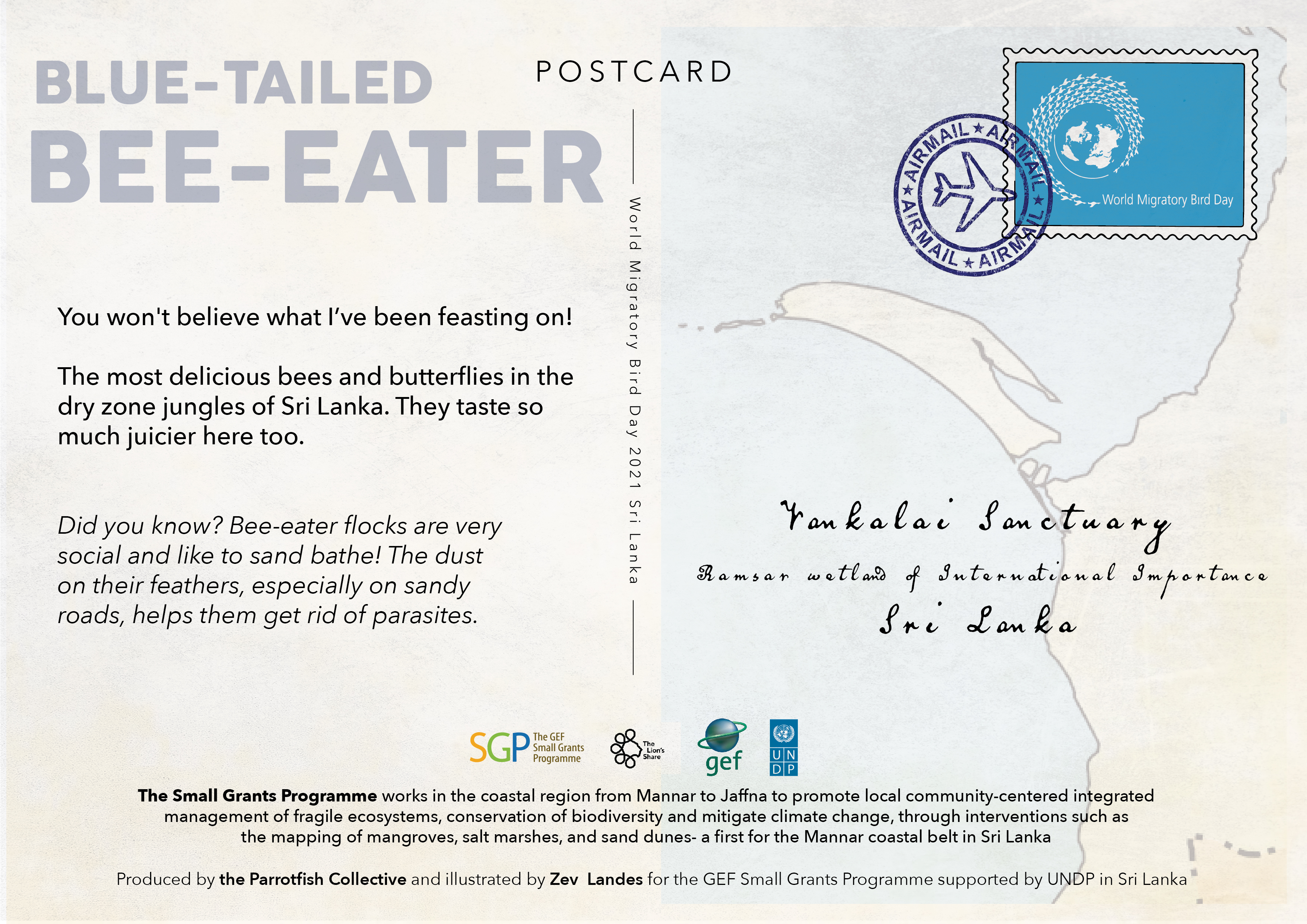Sing, Fly, Soar- like a Bird
World Migratory Bird Day 2021
October 9, 2021
World Migratory Bird Day 2021
It’s World Migratory Bird Day (WMBD). On this day and every day, it is important that we prioritize the need to conserve migratory birds and their habitats. WBMD aims to draw attention to the threats faced by migratory birds, their ecological importance, and the need for international cooperation to conserve them.
Migratory birds connect different places across the planet. They also reconnect people to nature and to themselves like no other animals.. They are among the most powerful indicators of biodiversity and ecosystem health to be protected across borders. Let's raise our voice for our feathered friends this #WorldMigratoryBirdDay!
The UNDP GEF funded Small Grants Programme in Sri Lanka works in the coastal region from Mannar to Jaffna to promote local community centered integrated management of fragile ecosystems, conservation of biodiversity and mitigate climate change, through interventions such as the mapping of mangroves, salt marshes, and sand dunes- a first for the Mannar coastal belt in Sri Lanka.
This #WorldMigratoryBirdDay we are shining the spotlight on seven charismatic migratory bird species that visit Sri Lanka each year.
Eurasian Wigeon
Born in the freezing Northern Hemisphere, a population of Eurasian Wigeons heads south to tropical Sri Lanka every year to escape the harsh winters.
The Eurasian Wigeon is a beautiful and distinctive bird that belongs to the same family as ducks, geese, and swans. Wigeons are known for their unusual feeding habits - known as ‘dabbling’, where they dunk their head in water, tail up, to reach plant matter and other food underwater.
They are usually found in flocks on lakes and wetlands, often grazing in nearby fields. Unfortunately, their wetland habitats are increasingly under threat from pollution and illegal dumping, affecting the ecological balance of their feeding grounds.
World Migratory Bird Day is not only a celebration of birds but also an important moment to reflect on our relationship with nature and to highlight the need to unite in a common, global effort to protect birds and the habitats they need to survive.
Greater Flamingo
What’s not to love about the flamboyant flamingo? These large birds are famously known for their long, ‘coat hanger’ necks, bent bill, and long pinkish legs. Flamingos are a beautiful sight – both when they are dancing around lagoons, and when they are airborne, sailing as streaks of pink across the sky.
Flamingos typically feed in salt lagoons and salt pans, making the Mannar and Jaffna region a stronghold of this species in Sri Lanka. In muddy flats or shallow water, they use their long legs and webbed feet to stir up the bottom. They then bury their bills, or even their entire heads, and suck up both mud and water to access the tasty morsels within. Like many other birds around the country, their habitats, and the natural resources they need to live are threatened by human actions.
Bird migration is a natural miracle. They fly hundreds and thousands of kilometres to find the best ecological conditions and habitats for feeding, breeding, and raising their young. World Migratory Bird Day is a great reminder to get outdoors and watch birds reconnect with the natural world and join the global celebration of migratory birds!
Eurasian Curlew
The Eurasian Curlew looks like the Pinocchio of birds with a long down-curved bill that allows the bird to probe deeply into the wet soils of its favourite habitats. The end of a Curlew’s bill is sensitive and moves independently, acting like tweezers, which enables it to feel around in the mud for prey. They forage and breed mainly in grasslands, from coastal marshes to coastal lowlands, especially mudflats and adjacent marshes. Sadly, the Eurasian Curlew has been listed as a ‘Near Threatened’ species by the International Union for the Conservation of Nature (IUCN); though it is still a common bird, its numbers are noticeably declining.
World Migratory Bird Day is a celebration of the amazing endurance of migratory birds as they travel between their breeding and wintering grounds. Watch birds in your garden, in a park, nature reserve, wetland, or even in a city to reconnect with nature and join the global celebration of migratory birds!
Brown-headed Gull
The Brown-headed Gull breeds on the high-altitude lakes of the Tibetan Plateau and migrates south during winters to warmer marshes, estuaries, lakes, and rivers - most often in coastal areas. They are bold and opportunistic feeders that scavenge from garbage dumps and eat invertebrates in ploughed fields with equal relish. These gulls can be found in noisy flocks resting on the water close to the beach.
Migration is a perilous journey and involves a wide range of threats, often caused by human activities. Climate change, habitat loss, plastic pollution are just a few of the diverse threats that these birds face. As migratory birds depend on a range of sites along their distribution area, the loss of wintering and stopover sites could have a dramatic impact on the birds’ chances of survival.
Indian Pitta
The Indian Pitta is a rainbow-coloured, long-distance traveller. This stubby-tailed bird is at home on the forest floor, hopping about in the undergrowth, combing leaf litter for the small critters that make up its diet.
They are called ‘Avichchiya’ in Sinhala and are known to be a harbinger of the new year (the time coincides with the bird’s migration to Sri Lanka). According to local folklore, the peacock supposedly got its bright plumage from sticking together feathers of other birds including those of the Pitta.
Pittas have been found in curious places; besides gardens and groves, young birds may accidentally bang against windowpanes or be found exhausted in urban areas. Presumably, this happens due to confusion from artificial illumination as they have been known to migrate through the night.
Dawn and dusk are when the Indian pitta is most active, throwing its head back and pointing its bill upwards, to emit a distinct, loud two-note whistle. The survival of this species is inextricably linked to the conservation of the forests they depend on. With habitat loss and deforestation on the rise, the future of the Indian Pitta looks bleak.
Northern Pintail
Is there a more handsome duck than the Northern Pintail? These stylish and elegant ducks dabble on the surface of the water and filter out seeds and insects with their bills.
Female pintails have developed a unique strategy to protect their nests. They pretend to be injured and distract the potential predator away from the nest. Northern Pintails nest in seasonal wetlands, croplands, grasslands, and wet meadows and forage in nearby shallow wetlands, lakes, and ponds.
Waterbirds such as these Northern Pintails are ecologically dependent on wetlands for at least part of their annual cycle. The main threats faced by these waterbirds are the destruction of wetland habitats and collisions with aerial structures and electrocution by power lines.
Blue-tailed Bee Eater
The agile Blue-tailed Bee Eater is a lethal insect hunter. True to their name, these richly coloured birds feed on bees and other insects such as butterflies and dragonflies by catching them in mid-air with deadly precision. Once caught, they skillfully remove the sting of insects and tenderize the body with a series of bashes on a suitable post. The insect is then swallowed, and any hard parts are regurgitated in pellet form. Males are even known to lure females by offering them free snacks from their insect prey.
Because they travel long distances, migratory birds have crucial roles across different regions. These birds don’t just control the numbers of pests and insects that would otherwise plague our natural environments and our crops – many serve as pollinators, moving seeds and nutrients.

 Locations
Locations